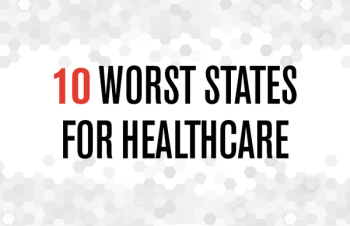
A look at how consumerization is changing healthcare forever.

Increased transparency and consumer-friendliness are common goals in improving billing, but more work is needed.

How nonprofit hospitals and health systems are getting involved with housing.

Telehealth being used to fill patient care gaps.

A new survey shows that despite concerns, most people view their experiences with healthcare positively.

Two organizations partner to help fund community-based organizations.

Millennials and Baby Boomers aren't so different after all.

FDA approved the third oncology drug in the US that targets a key genetic driver of cancer, rather than a specific tumor.

Blockbuster drug could be key to Humira’s successor.

The mentors and lessons that have impacted your career.

Ambulatory surgery centers can aid managed care in closing gaps in services, smooth adoption, and coordinate training.

The changes health executives should make to help ease the burnout problem.

Regional health plans can quickly reduce their costs by 4% to 5% while increasing member satisfaction.

The states that ranked the lowest in seven different health factors.

How oncology practices can help reduce spending on cancer drugs-without compromising on patient care.

With a link between chronic health conditions and high spending, how can costs be lowered for patients, providers, and payers?

Why millennials are demanding more wellbeing support.

Report shows that healthcare is still at a high risk for data breaches.

The M&A trend isn’t showing any signs of slowing.

While FDA’s drug approval time is generally improving, the agency needs to speed up generic drug application reviews, according to a new report.

How to drive greater member activation and participation in their own care.

Individuals without their own prescriptions may be at risk for overdose if they have access to family members’ drugs, according to a new study

While FDA recently said Novartis and AveXis did not reveal data on their $2.1 million gene thaerpy for pediatric spinal muscular atrophy until after it was approved, Novartis is defending its actions.

Experts provide 14 ways that insurers can improve their members’ experiences with them.

How payers and health systems are using wearables to monitor patient health and encourage healthy behaviors.

The state of telemedicine and remote patient monitoring.

Two challenges providers may face under the proposed rule.

MS is in need of new medications-these could be the future.

Opportunities to lower drug prices, as promised by President Trump’s American Patients First Blueprint, are picking up steam, some progressing more quickly than others.